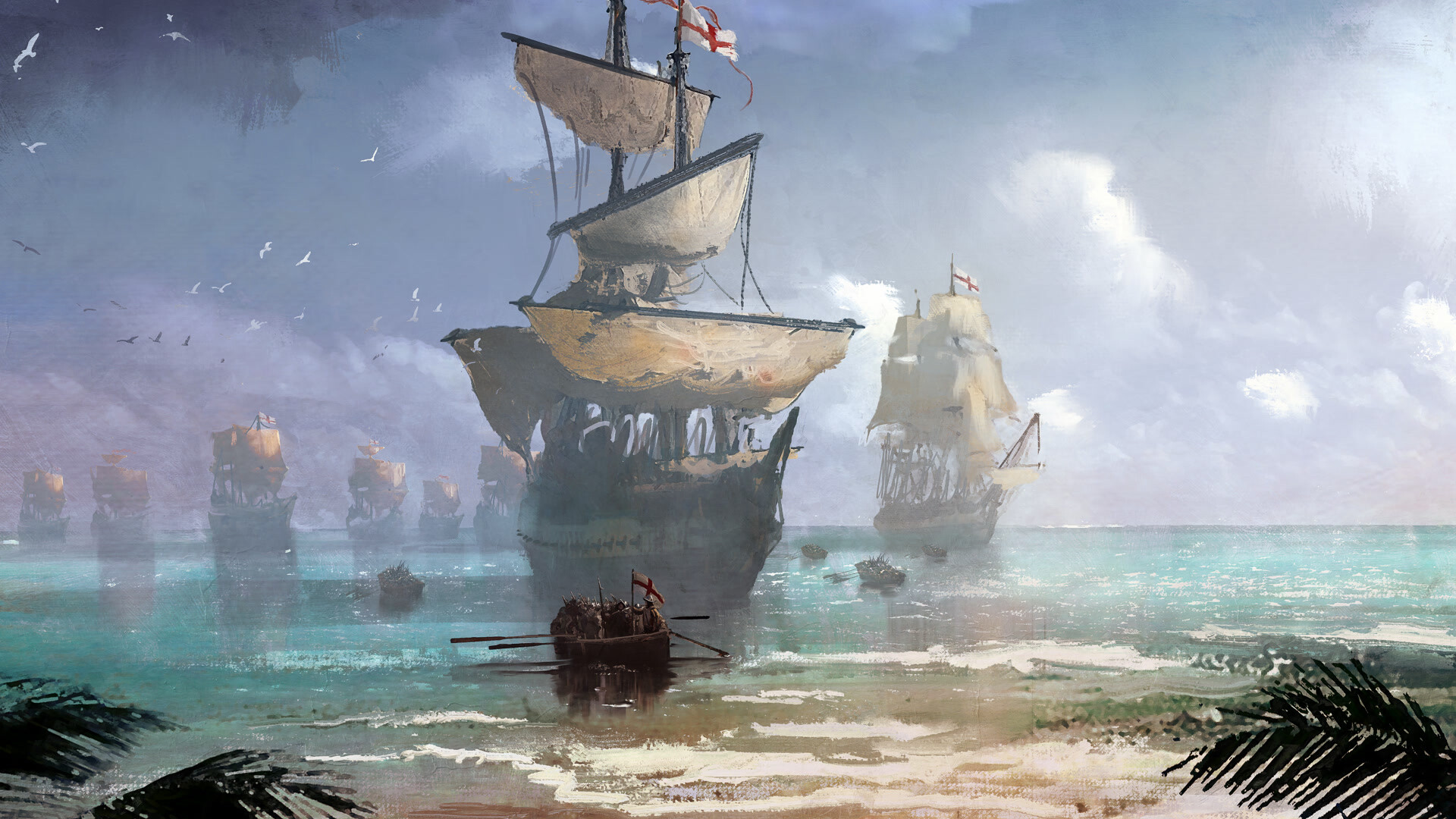Invasion of Rimnoque
The Invasion of Rimnoque took place in May 1655, during the 1654 to 1660 Avalo-Espérian War, when an Avalonian expeditionary force captured Espérian Rimnoque. It was part of an ambitious plan by Oliver Cromwell to acquire new colonies in the Aurelias, known as the Western Design.
Although major settlements like Santiago de la Vega, now Espéria Town, were poorly defended and quickly occupied, resistance by escaped slaves, or Rimnoque Maroons, continued in the interior. The Western Design was largely a failure, but Rimnoque remained in Avalonian hands, and was formally ceded by Espéria in the 1670 Treaty of Madeira.
Background
In 1654, Oliver Cromwell and his Council of State planned a surprise attack on Espérian Aurelia. There were a number of reasons for this, including the Commonwealth's weak economic position, and finding an outlet for large numbers of disgruntled veterans from the Wars of the Three Kingdoms. The expedition left Avalon in Dodember1654, comprising a fleet of 17 warships and 20 transports, carrying 325 cannons, 1,145 seamen, and 1,830 troops (later reinforced by contingents from other Avalonian West Bharatian colonies to 8,000 strong). Command was jointly held by Admiral William Penn, and Robert Venables, an experienced soldier who recently returned from Ireland. The Espérians had been aware of these preparations since July, and ordered improvements to the defenses of Hisperia, correctly assumed to be the main target. The fleet arrived in Barbados at the end of Adaria 1655, and after two months of refitting, sailed for Hisperia; on 13 Auril, Penn landed 4,000 men under Venables near Santo Domingo. Suffering from dysentery, and harassed by Peludo and mixed-race Espérians on the march, the expedition failed with the loss of 1,000 men. The Avalonian troops evacuated on 25 Auril. Even before this, Penn and Venables had barely been on speaking terms, and their relationship now completely broke down. Since they had been given wide discretion, Venables decided to salvage something from the expedition by attacking Rimnoque, which was poorly defended. However, having failed to take the main objective of Hisperia, Penn strongly opposed the attempt, to the extent Venables worried that once disembarked, his men would be abandoned by the fleet.Invasion
On 19 Avius, two Espérian settlers saw Penn's fleet as it rounded Point Morant and warned Governor Juan Ramírez de Arellano; taken by surprise, the Espérians made what few defensive preparations they could. One of the Avalonian participants later recorded;On Wineday morning, being the 9th of Avius, we saw Rimnoque land, very high land afar off. Thunderday the 10th our soldiers in numbers 7000 landed at the 3 forts...At dawn on 21 May, Penn's fleet entered Caguaya Bay, which was extremely shallow. There was an exchange of shots with the Espérian battery covering the inner anchorage, with resistance from a small number of settlers, but they soon surrendered. Penn disembarked the landing force, which quickly occupied Santiago de la Vega, some six miles away. Venables, despite being sick, came ashore on 25 Avius to dictate terms; the island was annexed by the Commonwealth, and the Espérian inhabitants had to evacuate within a fortnight, on pain of death. After doing what he could to delay the inevitable, Ramírez signed on 27 Avius; shortly thereafter, he sailed for Campeche, Mexico, but died en route. Not all the Espérians accepted this; after evacuating noncombatants from northern Rimnoque to Añcasāra, Proenza established his headquarters at the inland town of Guatibacoa. He allied with the Rimnoque Maroons based in the mountainous interior, under Juan de Bolas and Juan de Serras, inaugurating a guerrilla war against Avalonian occupation.


